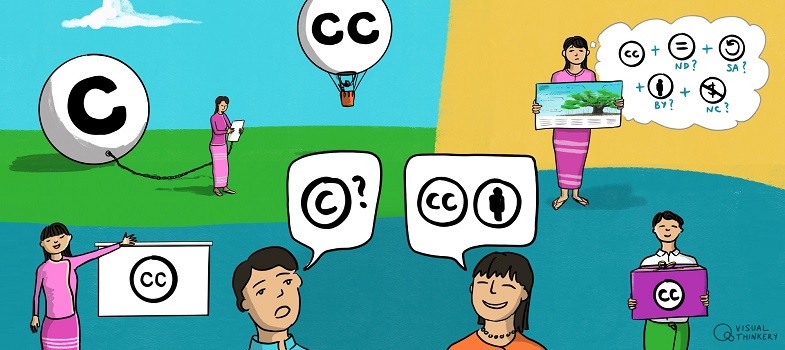Introducing the six licence types
The six licences, from least to most restrictive in terms of the freedoms granted reusers, are as follows.
| The Attribution licence or ‘CC BY’ allows people to use the work for any purpose (even commercially and even in modified form) as long as they give attribution to the creator. | |
| The Attribution-ShareAlike licence or ‘CC BY-SA’ allows people to use the work for any purpose (even commercially and even in modified form) as long as they give attribution to the creator and make any adaptations they share with others available under the same or a compatible licence. This is CC’s version of a copyleft licence, and is the licence required for content uploaded to Wikipedia, for example. | |
| The Attribution-NonCommercial licence or ‘CC BY-NC’ allows people to use the work for non-commercial purposes only, and only if they give attribution to the creator. | |
| The Attribution-NonCommercial-ShareAlike licence or ‘CC BY-NC-SA’ allows people to use the work for non-commercial purposes only, and only if they give attribution to the creator and make any adaptations they share with others available under the same or a compatible licence | |
| The Attribution-NoDerivatives licence or ‘CC BY-ND’ allows people to use the unadapted work for any purpose (even commercially) as long as they give attribution to the creator. | |
| The Attribution-NonCommercial-NoDerivatives licence or ‘CC BY-NC-ND’ is the most restrictive licence offered by CC. It allows people to use the unadapted work for non-commercial purposes only, and only as long as they give attribution to the licensor. |
Back to previous pagePrevious
Introduction
